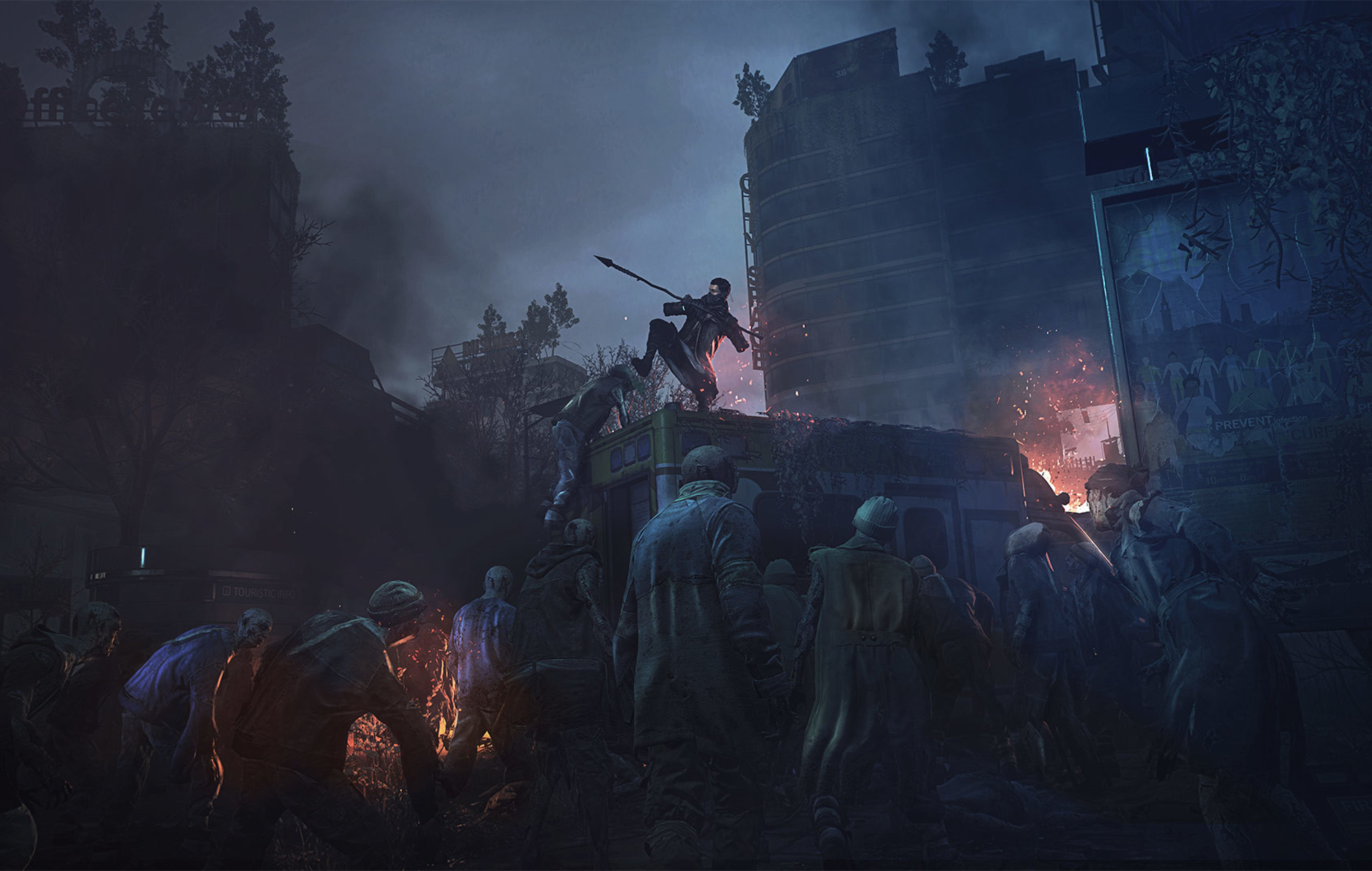System Shack is NME’s new column that explores the mechanics behind the industry’s most successful games. This week, Rick Lane takes a tumble in Dying Light 2.
Thus far in SystemShack, I’ve only explored mechanics that help to make their respective games great. But since we tend to learn more from our mistakes than our successes, it’s worth occasionally delving into a game where the core ideas don’t quite work. By far the highest-profile disappointment of this year is Dying Light 2Techland’s free-running, zombie-bashing sequel that simply fails to live up to the fun of the original.
There’s a lot wrong with Dying Light 2. The story is turgid and overwrought. The evolving cityscape that Techland hyped up prior to release is way less involved than what the studio promised. Even the day/night juxtaposition, fundamental to the point it’s alluded to in the game’s title, is rendered insignificant by the game’s peculiar structure.
But the game’s most notable flaws are found in its parkour, the acrobatic movement system that lets players leap, roll, and climb across the rooftops of Villedor to evade the city’s zombie hordes. dying light‘s combination of free-running and zombie survival put the game on the map, and having a whole new city to parkour across was key to the appeal of the sequel.

On paper, Dying Light 2 does much to improve upon the first game’s parkour. It adds a bunch of additional abilities to the player’s skillset, like wall-running, dashes, and even a double-jump (which doesn’t make a whole lot of sense, but then again, it is a game with zombies in it) . The environment is also built to better suit free-running, with the player able to utilize objects like rope-swings, ziplines, and pipes that you can slide down to reach the ground. Most importantly of all, there are fewer seams in the parkour’s move-set, with animations designed to link elegantly together for a smoother experience.
Logically, all of this should facilitate more immersive free-running. But the way Techland implements these ideas instead makes the parkour far less enjoyable. To begin with, Techland’s attempt to smooth out the parkour instead serves to remove much of the weight and momentum behind it, because it increases the gap between the player’s input and what happens on screen. Look closely at any parkour video for Dying Light 2, and you can see the game compensating for what it deems player error, artificially stretching out jumps and redirecting Aiden to land on specific obstacles. The result might look more stylish, but it feels devoid of impact and physicality, less like you’re inhabiting a character and more like you’re a puppet on a wire.
This is by far the biggest flaw with Dying Light 2‘s parkour, but the issue is compounded by a couple of other factors. First, a huge amount of the game’s platforming potential is locked behind a skill upgrade tree. Such upgrade trees are fairly typical in modern open-world games, but Dying Light 2‘s system completely hobbles the parkour for the first ten hours of the game. Not only does it lock away advanced moves like wall-running and the ability to jump off enemies. It prevents you from doing basic things like jumping up to higher ledges and maintaining their grip on a handhold for more than a few seconds. whereas dying light‘s parkour was liberating, your main defense against the zombies, Dying Light 2‘s parkour is restricted and unsatisfying.

This problem does eventually go away. By the time you reach the game’s second act, you will have unlocked most of the basic parkour skills and can enjoy the system for what it is. But this problem is almost immediately replaced by another, which is that Dying Light 2‘s second act renders the game’s parkour system null and void. Act 2 takes place in Villedor’s downtown, all glittering skyscrapers too tall to climb by hand and too far apart to jump between. Instead, this moving around downtown revolves largely around a parachute, which lets you glide between skyscrapers and access them from the ground with the use of updrafts.
The parachute can be fun to play around with, but it also lets you go pretty much anywhere in Villedor’s downtown. This means that, having spent hours slowly unraveling the potential of Dying Light 2‘s parkour, the game suddenly introduces a system that drastically reduces the need for your free-running skills. Just at the point where the parkour becomes interesting, the game all but replaces it with a movement system that’s far less interactively engaging.
The missteps Techland makes with Dying Light 2‘s parkour becomes a lens through which to view the larger problems of the game. Techland clearly wants Dying Light 2 to be a more lavish and culturally significant experience than the first game, which is why it dedicates so many of its resources to storytelling. But it loses sight of what made the original game fun in the process, and the results are a less satisfying experience all around.
If you enjoyed this column, check out last week’s SystemShack – where Rick explores what makes Elden Ring‘s Guard Counters so unique.
